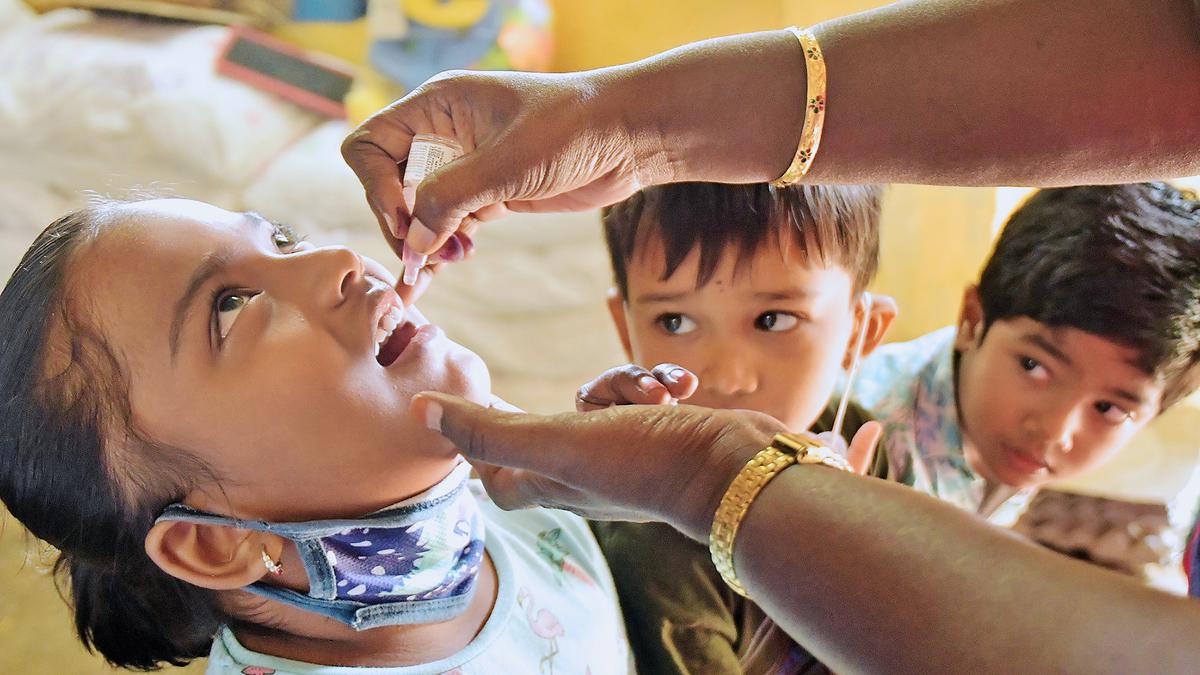
Unethical to continue using polio-causing oral polio vaccines Premium
The Hindu
GPEI set goal to eradicate wild poliovirus by 2000, but VDPV & VAPP not included. VAPP cases in India outnumbered wild polio cases since 2004. Global switch to bivalent OPV in 2016 to prevent type 2 VDPV cases, but number of outbreaks increased. WHO approved novel OPV2 in 2020, but 3 VDPV cases already reported. GPEI urged to transition to IPV to prevent more polio cases in name of eradication.
In 1988, the World Health Assembly declared WHO’s commitment to global eradication of polio by 2000. But in 1993, the goalpost was shifted — the goal was to eradicate only wild poliovirus globally by 2000. That meant that eradicating vaccine-derived poliovirus (VDPV) and vaccine-associated paralytic poliomyelitis (VAPP) was no longer the objective. The reason: developing countries using oral polio vaccine reported many vaccine-derived or vaccine-associated polio cases annually. Meanwhile, the developed countries switched to inactivated polio vaccine thus eradicating polio decades ago.
Though the last case of type 2 wild poliovirus was reported in October 1999 from India (and declared eradicated globally in 2015), more than 90% of vaccine-derived poliovirus outbreaks are due to type 2 virus present in oral polio vaccines. Also, 40% of VAPP are caused by type 2 oral polio vaccine. Similarly, the last case of type 3 wild poliovirus was reported in November 2012 (and declared eradicated in 2019). But many cases of VAPP from type 3 virus occur in countries using oral polio vaccine.
Surprisingly, the Global Polio Eradication Initiative (GPEI) has never reported VAPP cases throughout the 34 years of polio eradication efforts. And the Indian government does not count VAPP as polio as such cases are sporadic and pose little or no threat to others.
This is concerning as the number of VAPP-compatible cases showed an increasing trend in India from 1998 to 2013, so much so that they outnumbered the polio cases caused by wild poliovirus since 2004, as per a 2014 report in the International Journal of Infectious Diseases.
According to a 2015 Perspective piece in Indian Pediatrics, VAPP cases occur at a frequency of two-four cases per million birth cohort per year in countries that use OPV. Based on this incidence rate, an estimated 50-100 children might suffer from VAPP every year in India. Despite India not maintaining any record of VAPP cases, the incidence of such cases for three years — 181, 129 and 109 in 1999, 2000 and 2001, respectively — have been reported.
With type 2 wild poliovirus being eradicated and all type 2 polio cases being vaccine-derived, there was a global switch from trivalent (containing all three variants) to bivalent (type 1 and type 3) oral polio vaccine in 2016 to prevent any more type 2 vaccine-derived poliovirus. WHO’s SAGE said in 2015 that switching from trivalent to bivalent OPV vaccine and introducing one dose of IPV will reduce the occurrence and ultimately eliminate all vaccine-derived type 2 poliovirus cases.
Yet, the number of vaccine-derived type 2 poliovirus outbreaks have only increased sharply after the global switch to bivalent oral polio vaccine. From only two countries reporting outbreaks that caused 96 VDPV type 2 cases in 2017, the number of outbreaks increased to five in 2018. The number of VDPV type 2 cases increased further to 251 from 15 countries in 2019. In 2020, the VDPV type 2 cases peaked at 1,081 from 26 countries, many of which were previously polio-free. In 2021, 682 such cases were reported and 675 cases in 2022.











